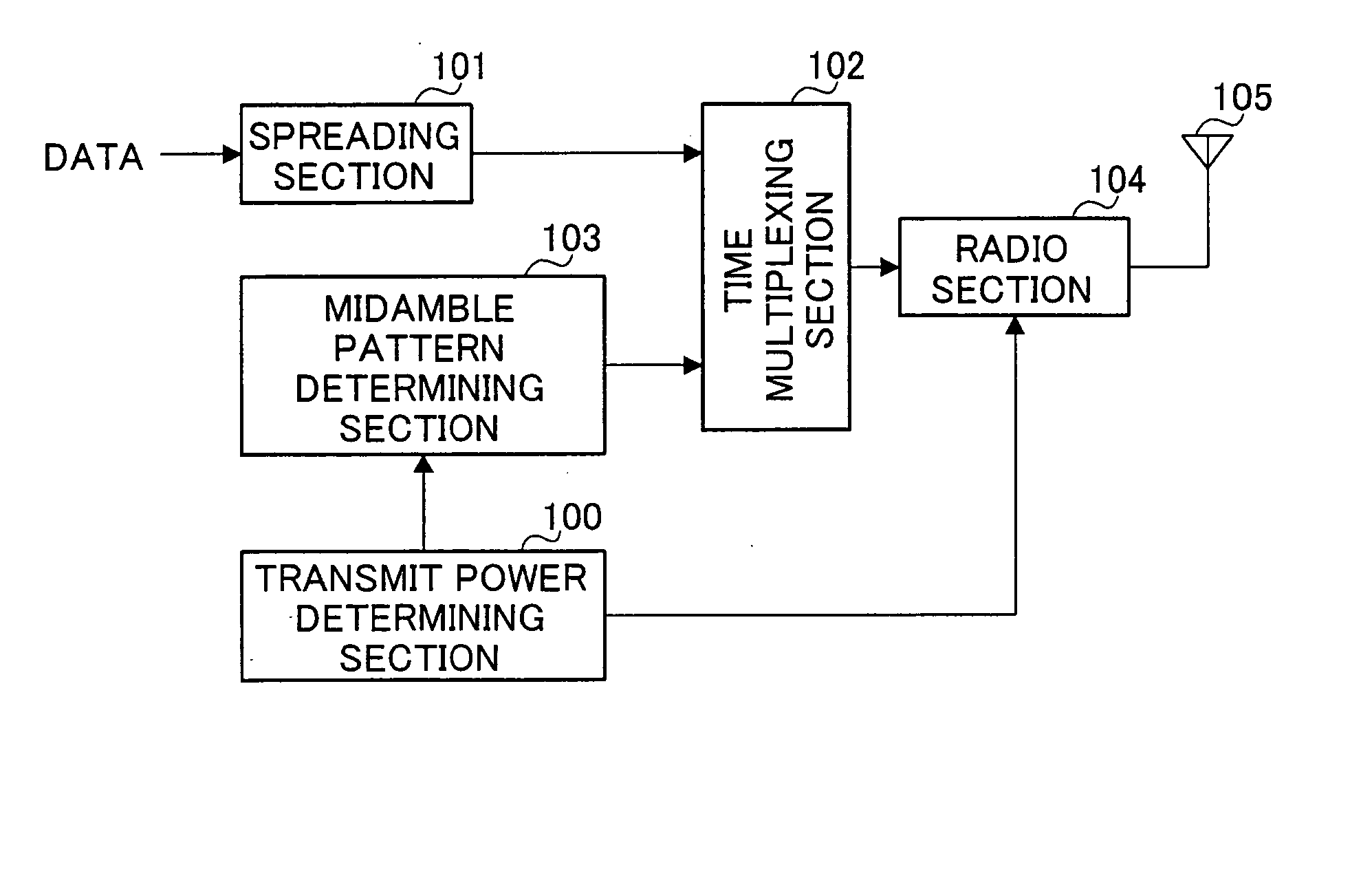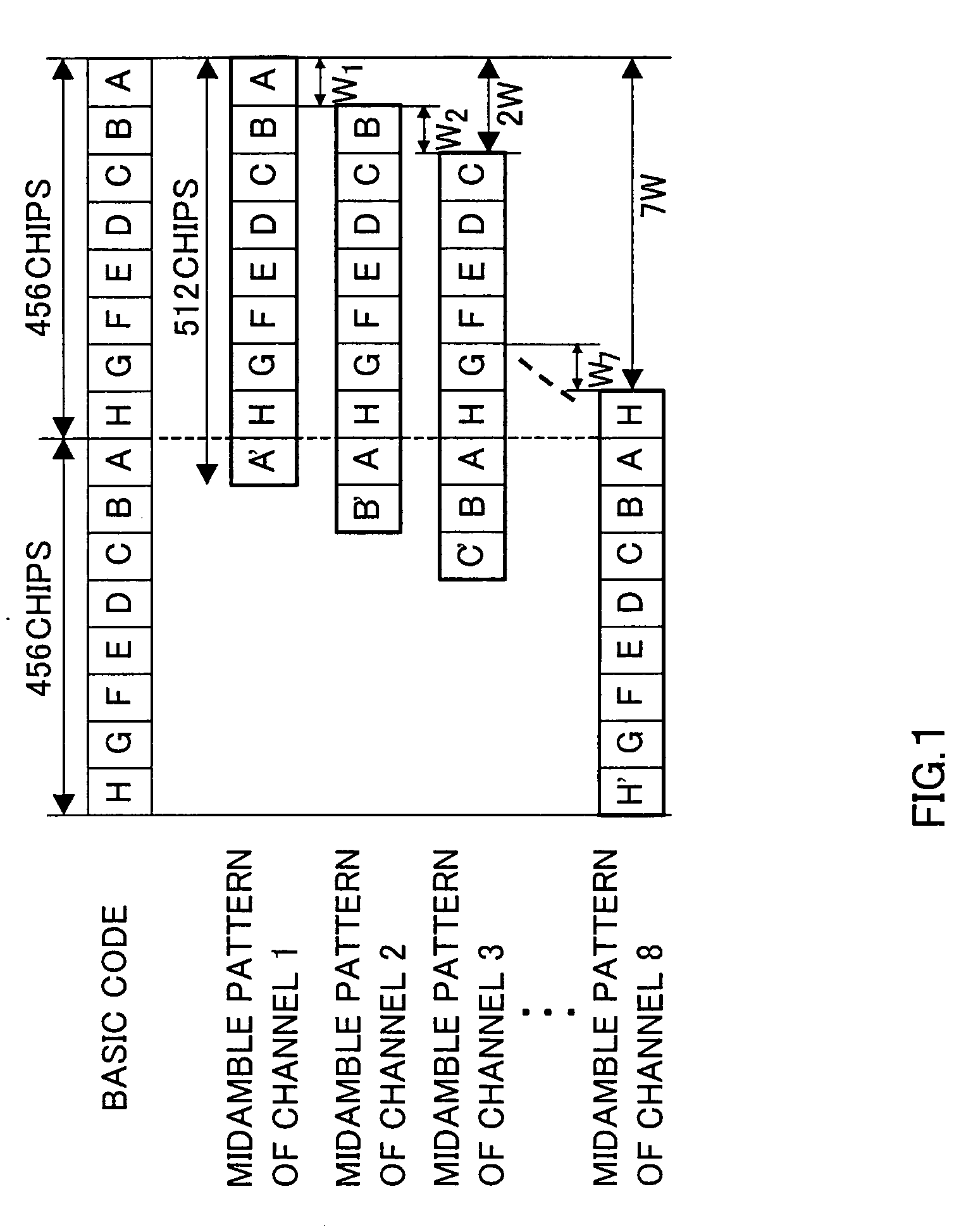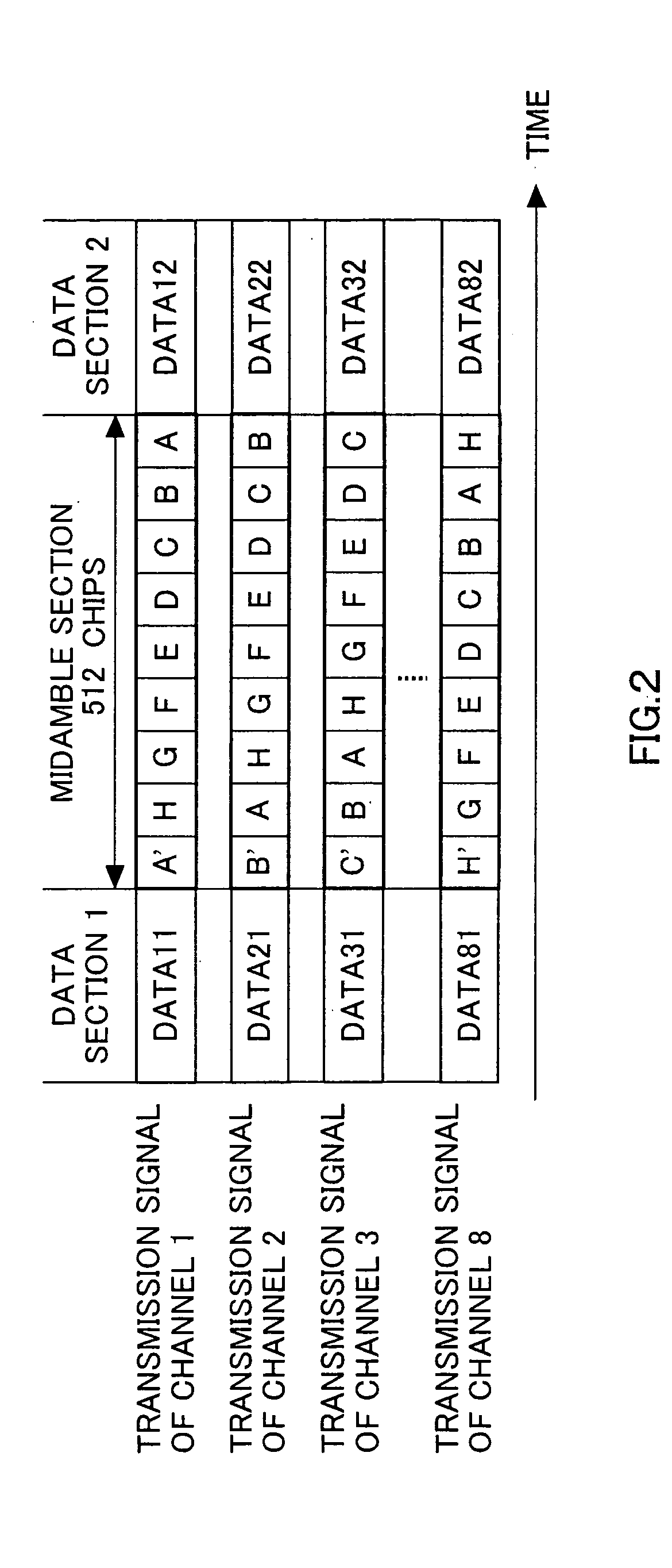Apparatus and Method for Transmission
a transmission method and apparatus technology, applied in the field of communication apparatus, can solve the problems of w-chip length exceeding the sum of propagation delay and delay variance of rach signal, and the apparatus has a greater propagation delay, so as to improve the probability of random access communication. the effect of success
- Summary
- Abstract
- Description
- Claims
- Application Information
AI Technical Summary
Benefits of technology
Problems solved by technology
Method used
Image
Examples
embodiment 1
[0053]FIG. 8 is a block diagram showing a configuration of a mobile station apparatus equipped with a transmission apparatus according to Embodiment 1 of the present invention. In FIG. 8, transmit power determining section 100 calculates a propagation loss between this mobile station apparatus and a base station apparatus using a signal transmitted through an information channel (hereinafter referred to as “information channel signal”) Furthermore, transmit power determining section 100 determines a transmit power value of an RACH signal according to the calculated propagation loss and the number of times the RACH signal is retransmitted. The determined transmit power value is sent to midamble pattern determining section 103 and radio section 104.
[0054] Spreading section 101 performs spreading processing on the transmission data using a spreading code assigned to this mobile station apparatus. This transmission data corresponds to data subjected to predetermined modulation processi...
embodiment 2
[0104] This embodiment will explain a case where when a delay profile of a certain mobile station apparatus according to Embodiment 1 does not appear in an expected W-chip section, deterioration of channel estimated values of other mobile station apparatuses will be prevented. The mobile station apparatus equipped with a transmission apparatus according to this embodiment and the base station apparatus equipped with a reception apparatus according to this embodiment will be explained below focused on differences from Embodiment 1 with reference to FIG. 14 to FIG. 16.
[0105]FIG. 14 is a schematic view showing a procedure for creating midamble patterns used for mobile station apparatuses equipped with a transmission apparatus according to Embodiment 2 of the present invention. FIG. 15 is a schematic view showing transmission timing of the mobile station apparatuses equipped with the transmission apparatus according to Embodiment 2 of the present invention. FIG. 16 is a schematic view ...
PUM
 Login to View More
Login to View More Abstract
Description
Claims
Application Information
 Login to View More
Login to View More - R&D
- Intellectual Property
- Life Sciences
- Materials
- Tech Scout
- Unparalleled Data Quality
- Higher Quality Content
- 60% Fewer Hallucinations
Browse by: Latest US Patents, China's latest patents, Technical Efficacy Thesaurus, Application Domain, Technology Topic, Popular Technical Reports.
© 2025 PatSnap. All rights reserved.Legal|Privacy policy|Modern Slavery Act Transparency Statement|Sitemap|About US| Contact US: help@patsnap.com



